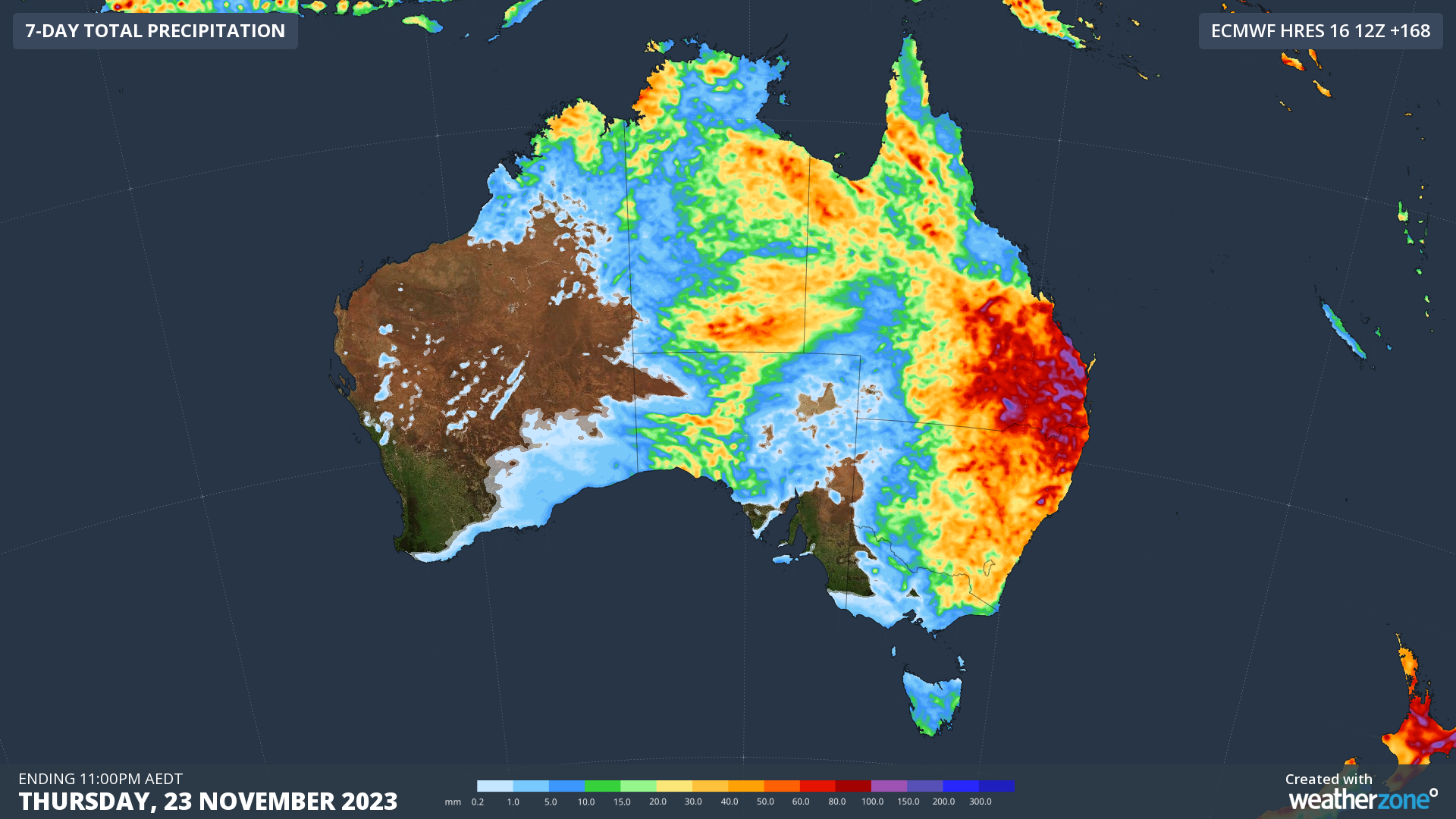Storms soak Red Centre, Eastern Australia next in line
Rain and thunderstorms have been soaking Australia’s Red Centre this week, with Alice Springs picking up more than a month’s worth of rain last night.
A broad area of low pressure interacting with a moisture-laden air mass has produced several days of wet and stormy weather in central Australia this week.
Earlier in the week, grey clouds and storms swept across the Uluru-Kata Tjuta National Park, providing a unique opportunity to witness lightning and rain around Uluru.

Image: Lightning near Uluru earlier this week. Source: @jestopher.palmer / Instagram
The wet and stormy weather then spread further north and east on Thursday into Friday, allowing intense storms to pass over Alice Springs.
The rain gauge at Alice Springs Airport received 36 mm of rain between 11pm Thursday and 7:30am Friday. This is 4mm more than its November monthly average and its highest daily total in 10 months.
Weatherzone’s Total Lightning Network detected just over 50,000 lightning strikes within 200 km of Alice Springs during the 12 hours ending at 10am ACST on Friday.

Video: Storms passing over Alice Springs on Thursday night.
This week’s storms in central Australia are part of a more widespread outbreak of late-spring thunderstorms that has been causing issues in other parts of the country.
Intense thunderstorms in WA’s Wheatbelt on Tuesday caused an unwelcome burst of heavy rain and hail, which damaged crops and disrupted harvest operations in the region.
Rain and storms will continue over central Australia on Friday and Saturday, before the focus of the wet and stormy weather spreads to the country’s east and north.
Some forecast models suggest that rain and thunderstorms could linger over eastern and northern Australia through most of next week, increasing the risk of heavy multi-day rainfall and flooding. The map below shows how much rain one forecast model is predicting during the next seven days combined.

Image: Forecast accumulated rain during the week ending on Thursday, November 23, 2023, according to the ECMWF-HRES model.